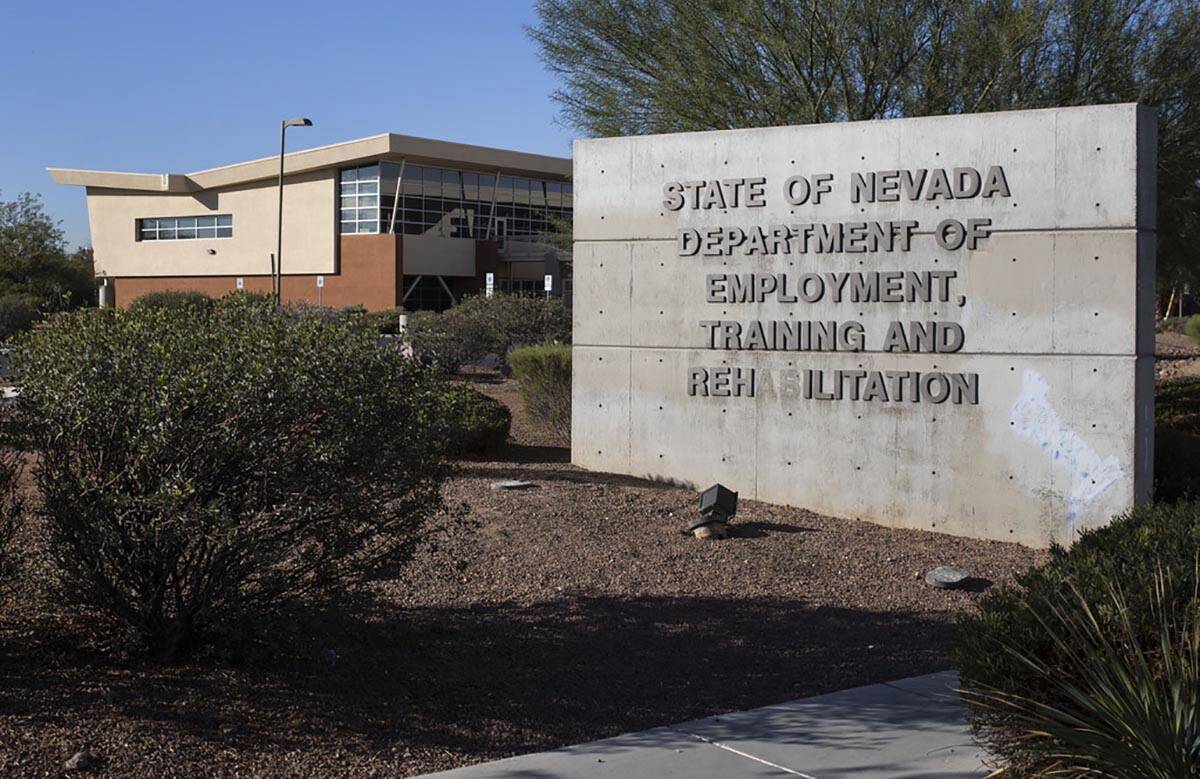Nevada has 12K jobless claims in appeals. How long will clearing the backlog take?
It has been four years since the COVID-19 pandemic overwhelmed Nevada’s unemployment insurance offices but the effects of high unemployment and a bogged-down system are still being felt by claimants who filed long after lockdowns were lifted.
North Las Vegas resident Laurie Jones said her husband was fired from his warehouse job last May but was denied about $6,400 in benefits because his employer said he was fired for cause. Jones and her husband immediately disputed the determination and waited until February — roughly 10 months after losing his job — for a chance to argue his case.
“It’s tough. I’m carrying him right now,” Jones said of the delay’s impact on the couple. “That $6,000 would have helped him stay on top of his bills, but I don’t think they care.”
The state has one of the longest unemployment insurance appeal backlogs in the nation, with an average pending case length of about 432 days as of January, according to state data shared with the U.S. Department of Labor. It’s the fourth highest in the nation, behind Alabama, Georgia and Virginia, and highest in the western U.S.
That same dataset shows there are about 10,600 incomplete appeal cases, but the Nevada Department of Employment, Training and Rehabilitation said in late February there were about 12,000 cases waiting in the queue.
Months-long waiting
The state said the lengthy delays are a result of the COVID-19 pandemic’s impact on the unemployment system. DETR was inundated with an unprecedented number of unemployment claims when the state’s jobless rate soared in early lockdowns and peaked at 30.6 percent in April 2020.
Adding to the rush on the system was the rollout of new pandemic-related programs such as Pandemic Unemployment Assistance (PUA) for self-employed workers. But in 2022, Nevada determined it had paid out too much in unemployment benefits and asked 150,000 Nevada residents for the money back.
Those appealing the overpayment notices faced their own lengthy backlog in 2023. Now, DETR said its PUA appeals are completed, and it is focused on clearing the backlog for traditional unemployment insurance claims.
“If you think of this as a tidal wave that goes in and goes out, appeals is a last part of the wave,” Director Christopher Sewell said. “We’re dealing with that and DETR will be back to normal for all its UI operations sometime this year.”
Sewell said this wave of delays came from his decision to have the department focus on clearing backlogs in adjudication – the first approval or denial of a claim – and PUA-related appeals so that they wouldn’t further impact the appeals department. About 55 percent of pending appeals cases were older than 360 days, according to January’s Department of Labor data.
The department has scheduled or is preparing to schedule most appeals, Sewell said. About 1,500 of the estimated 12,000 appealed cases had their hearings but the decisions still must be written.
“The reason why (there is a UI backlog) is we wanted to make sure PUA was completed, so we put a lot of resources into that,” he said. “If I had concentrated on (appeals), then I would have been robbing Peter to pay Paul, so to speak. We didn’t want people sitting out there saying, ‘What’s going on? I haven’t heard from them in two years.’”
But some Nevadans say the scheduling isn’t coming fast enough and lengthy waits are causing stress. Las Vegas resident Lisa Sensabaugh said she was let go from her business services job in October. Her employer said she was a no-call, no-show, but she disputed that she didn’t notify her supervisor.
Sensabaugh said she appealed the benefits denial but hadn’t received communication from the department in about three months. When speaking to a DETR employee over the phone, she said they told her the wait could be well into 2025.
“I don’t have the money to hire an attorney, I’m just kind of waiting,” Sensabaugh said. “I just want them to provide truthful information. If they’re genuinely a year and half back and there’s no end in sight, then tell them. They give people false hope.”
Changes at DETR
Sewell said claims are scheduled through the end of the year, but he hopes to get them done within six to eight months. He directed teams clearing the adjudication and PUA backlogs to work on appeal cases, adding intermediate positions and is considering the use of transcription technology to move through the 12,000 cases faster.
DETR is also working through a modernization project to its unemployment insurance system. The Nevada Legislature approved a $72 million overhaul of the state’s system; the employer self-service side was rolled out in mid-February. Employers are encouraged to log into the new system before tax information is due in April.
Nevadans filing unemployment insurance claims will not see changes to their side of the portal until about summer 2025, when the second phase is rolled out.
The new system is similar to Windows, making it familiar to many businesses and workers, Sewell said. It’s cloud-based with fewer human touch points and more automation to speed up processes.
“The old system was the old system,” Sewell said. “And I think everyone during the pandemic felt its inadequacies.”
McKenna Ross is a corps member with Report for America, a national service program that places journalists into local newsrooms. Contact her at mross@reviewjournal.com. Follow @mckenna_ross_ on X.

















